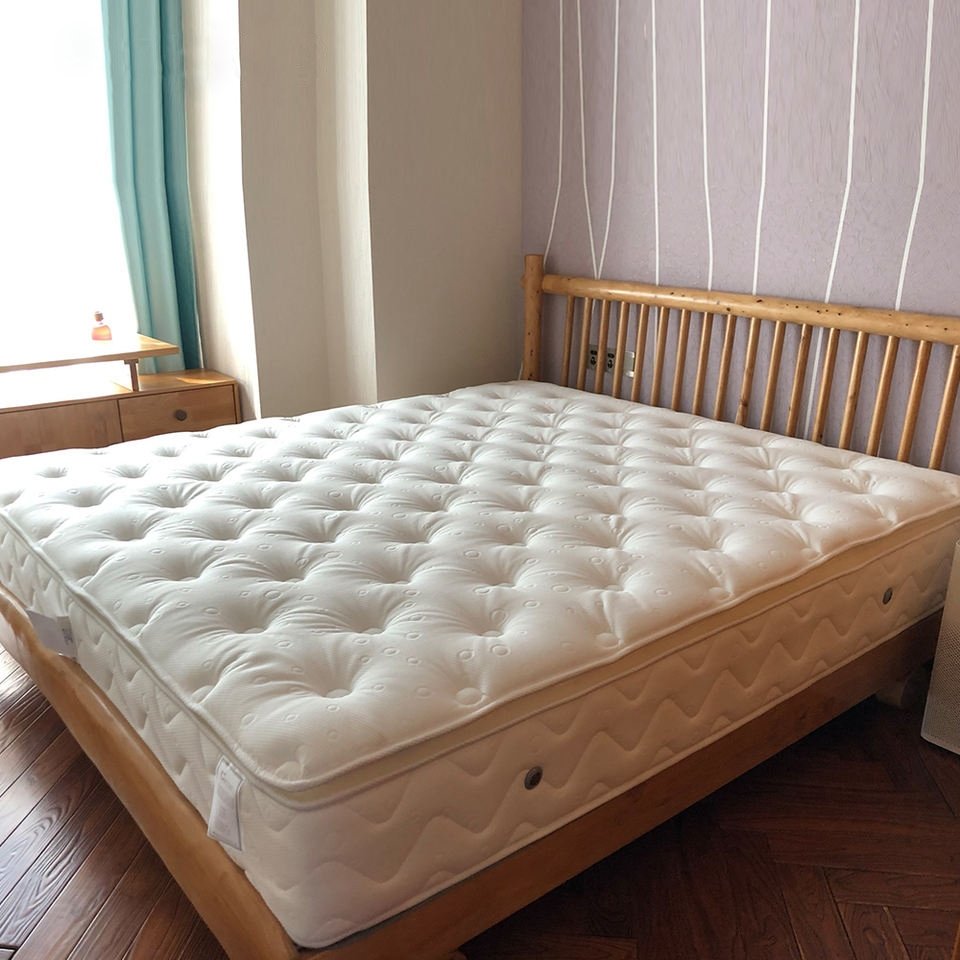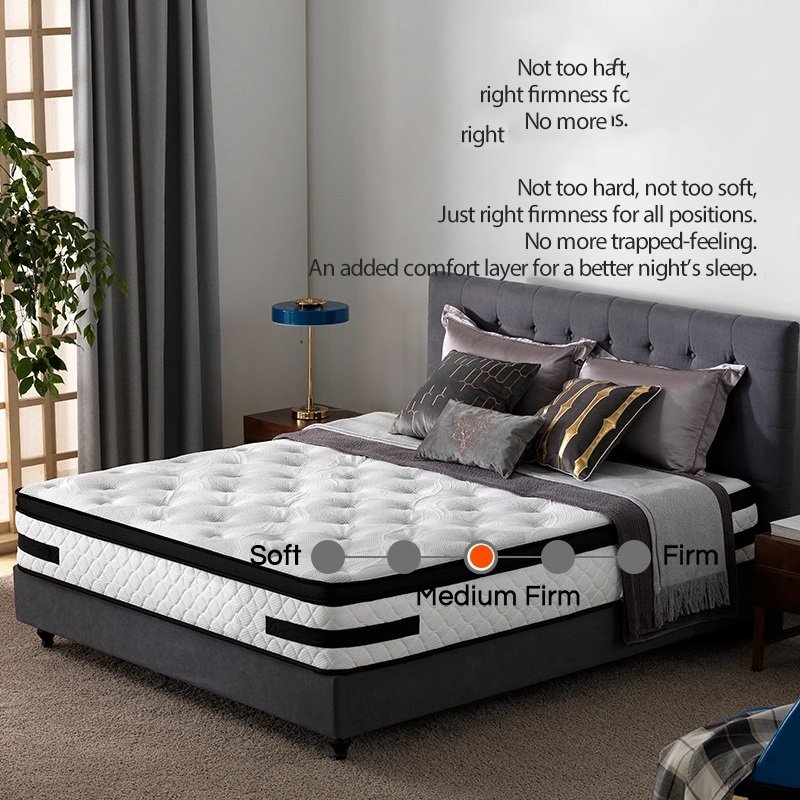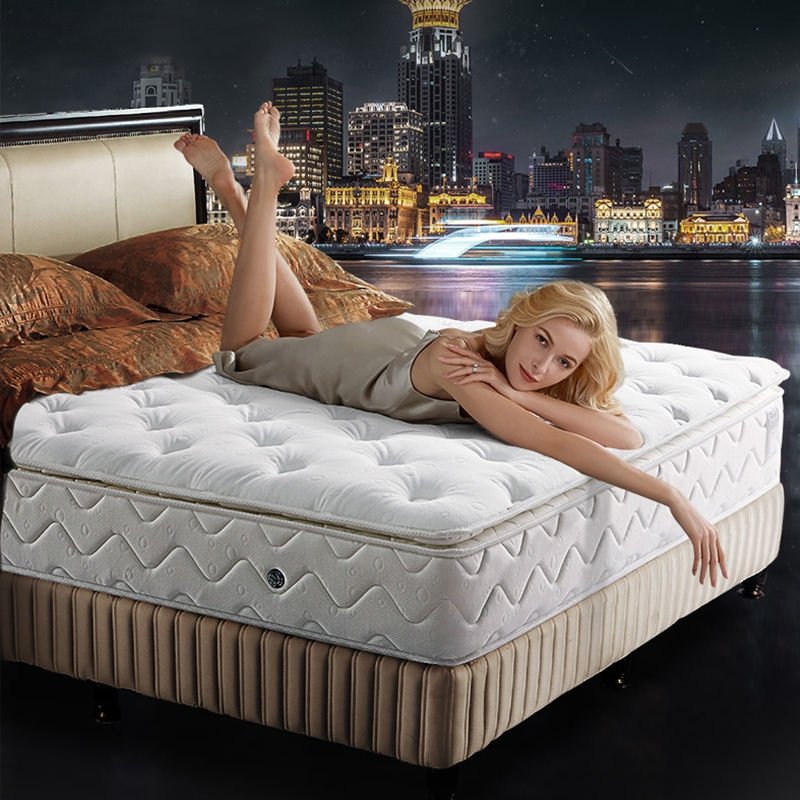The durability of foam mattresses, often ranging from 5 to 15 years, raises important considerations when juxtaposed with other mattress types, such as innerspring or latex. Factors influencing longevity include foam density and the quality of construction, yet these mattresses generally offer a shorter lifespan compared to the 20-year potential of latex options. This discrepancy underscores the necessity of exploring what specifically contributes to the wear and resilience of foam mattresses. As consumers navigate these differences, understanding the underlying factors that affect mattress durability not only aids in making informed purchasing decisions but also in anticipating the maintenance and eventual replacement needs of their chosen mattress.
The longevity of a mattress can vary significantly depending on its type.
Foam, latex, hybrid, and innerspring mattresses each offer different lifespans due to their unique material compositions and construction methods.
Understanding these distinctions is crucial for consumers seeking mattresses that offer the best balance of comfort and durability.
Foam mattresses, known for their convenience and comfort, typically have a lifespan ranging from 5 to 15 years depending on their density and material quality.
When considering foam vs memory foam, it's crucial to note that memory foam mattresses, often made from high-density foam, offer extended durability, supporting up to 15 years of use. In contrast, lower density traditional foam beds might only withstand 5 to 7 years before showing signs of sagging.
Innovations such as gel-infused foam and cooling foam materials have elevated the functional aspects of foam mattresses, enhancing their longevity by mitigating heat retention and maintaining structural integrity. Gel-infused foam, in particular, combines the plushness of traditional foam with temperature regulation properties, providing a sleep surface that resists wear while keeping sleepers cool.
Additionally, the introduction of plush foam layers atop high-density bases offers a blend of comfort and support, maximizing the mattress's lifespan by evenly distributing body weight and reducing pressure points.
This layered approach not only extends the durability of foam mattresses but also addresses the common issue of insufficient back support in softer foam models.
Shifting focus to latex mattresses, these options present a unique set of characteristics and longevity concerns compared to their foam counterparts. Latex mattresses, known for their resilience and support, offer a compelling alternative in the latex durability comparison. They typically outlast many other types, including traditional memory foam, due to their robust natural and synthetic compositions.
Latex vs memory foam mattresses often centers on longevity and hypoallergenic properties. Natural latex, for example, can last up to 20 years with proper care, significantly outpacing the average memory foam lifespan. The core difference lies in the materials used—natural latex being derived from rubber tree sap, which is inherently more durable than the chemically formulated viscoelastic foam used in memory foam mattresses.
Proper latex mattress maintenance is crucial to maximize its lifespan. Here are some latex mattress care tips to consider:
| Factor | Importance | Tips |
|---|---|---|
| Regular Rotation | High | Rotate every three months |
| Proper Base | Essential | Use a firm, supportive foundation |
| Cleaning | Crucial | Vacuum regularly, spot-clean spills |
Hybrid mattresses, blending layers of foam or latex with springs, typically offer enhanced comfort and support, lasting between 6 to 10 years depending on material quality and construction. The pros and cons of these mattresses are significant factors to consider. While they provide a balance of softness and support, their longevity can be compromised by the quality of the springs and foam used.
When evaluating hybrid mattress durability, it's essential to consider the type of foam (memory or latex) and the design of the spring system. Higher density foams and advanced spring technologies like individually wrapped coils tend to extend the lifespan of a mattress compared to those made with lower quality materials.
In terms of hybrid mattress lifespan comparison, hybrids generally outlast traditional spring mattresses but may not reach the longevity of high-quality latex models. This makes them a practical middle-ground choice for those seeking durability without foregoing comfort.
To maximize the life of your hybrid mattress, regular maintenance is crucial. Rotating the mattress periodically, using a supportive bed frame, and managing surface hygiene can prevent premature wear and sagging. Awareness of these hybrid mattress maintenance tips and quality factors ensures control over your sleeping environment, enhancing both comfort and the lifespan of your mattress.
Innerspring mattresses, characterized by their coil or spring systems, can remain functional and supportive for up to 10 years with proper care and high-quality materials. The longevity of these mattresses largely depends on the coil durability and the spring maintenance regimen adhered to by the owner.
Not all coils are made the same; some, like the twice-tempered coils in Sealy Posturepedic mattresses, are designed for enhanced durability and are accompanied by a 10-year warranty, reflecting a high coil lifespan.
Support comparison between various types of innerspring mattresses reveals that those with pocket coils tend to be more durable than those with Bonnell springs. This is because pocket coils work independently to distribute weight evenly, thus reducing wear and tear on specific areas. Proper maintenance, including regular rotation and the use of a supportive base, can significantly extend the life of these mattresses.
Additionally, edge durability is a critical factor for many users. Innerspring mattresses with reinforced edges tend to maintain their shape and support longer, providing a more robust sleeping surface. This feature is particularly important for those who often sit on the edge of the bed or who require stable support to enter and exit the bed comfortably.
Several factors influence the longevity of a foam mattress, including material quality, usage patterns, and maintenance practices. First and foremost, foam density plays a pivotal role. High-density foam not only offers better support but also withstands compression better over time, directly impacting durability.
Your sleep position also affects how the mattress wears; side sleepers, for example, might notice quicker degradation in areas under higher pressure, such as hips and shoulders, due to concentrated weight.
The choice of bed base is equally critical; a supportive base ensures even weight distribution and can significantly extend the mattress's life by preventing sagging and uneven wear. Furthermore, effective cleaning methods are essential to maintain the mattress's integrity. Regular vacuuming and spot cleaning, as recommended, will help mitigate the accumulation of dust and allergens, which can break down the foam structure over time.
Lastly, body weight is a factor that cannot be overlooked. Heavier weights may lead to quicker degradation of the foam, emphasizing the need for choosing a mattress that is designed to support your specific body weight adequately. Through informed choices and proper care, the lifespan of a foam mattress can be maximized, ensuring sustained comfort and support.

Recognizing when to replace your foam mattress is crucial for maintaining optimal sleep quality and comfort. Understanding the replacement signs can empower you to make timely decisions, ensuring continuous support and hygiene. Typically, a foam mattress lifespan extends up to six years or more, but several factors might shorten this duration.
One primary indicator that your foam mattress requires replacement is when you consistently wake up with pain or stiffness. This discomfort suggests that the mattress no longer provides adequate support. Comparatively, while latex mattresses are known for their durability and resilience, a foam mattress might start showing body impressions or excessive sagging sooner, which can disrupt your sleep alignment.
Another concern is heat retention. If your mattress has begun to retain too much heat, leading to uncomfortable nights, it might be time to consider alternatives that manage temperature better. Foam mattresses, unlike some newer materials, can accumulate heat, affecting sleep quality.
Lastly, hygiene plays a critical role. A mattress that's covered in stains or fabric tears not only looks unsightly but also harbors bacteria, undermining effective stain prevention. Replacing your mattress in the presence of these signs ensures a clean, healthy sleep environment, thus maintaining control over your sleeping conditions.

Foam mattresses, an ideal choice for those seeking comfort and support, can enjoy an extended lifespan with proper care and maintenance.
To ensure durability, rotate your memory foam mattress regularly to distribute wear evenly.
It's also crucial to understand how to clean your mattress properly, as spills and stains can degrade the material over time.
Utilizing a mattress protector shields against dirt and spills, significantly prolonging its pristine condition.
Additionally, pairing your mattress with a suitable base provides the necessary support and prevents sagging.
Finally, avoid placing your mattress in environments with temperature extremes, as these can affect the foam's structure and resilience.
Adhering to these guidelines will maximize the longevity of your foam mattress.
Best For: Individuals seeking a comfortable, supportive sleep experience who are willing to maintain their mattress with care.
Pros:
Cons:

When comparing the longevity of foam mattresses to spring mattresses, foam options generally offer a longer lifespan due to their durable construction and fewer deteriorative components. A lifespan analysis reveals that while a high-quality memory foam mattress can last between 6 to 15 years, spring mattresses typically have a lifespan of about 10 years.
The durability comparison between these two types is largely influenced by material differences. Memory foam is designed to resist sagging and body impressions, key longevity factors that contribute to its extended lifespan. In contrast, the metal coils in spring mattresses can lose their supportiveness over time, leading to quicker deterioration.
Maintenance tips also play a crucial role in the longevity of these mattresses. While both types benefit from regular care, the simpler composition of foam mattresses often requires less maintenance compared to the mechanical susceptibilities of springs, which may need more frequent checks and balances to ensure continued support and comfort.
Understanding these aspects helps in making an informed decision when choosing between foam and spring mattresses, focusing on long-term comfort and durability. Ultimately, the choice should align with personal comfort preferences and the desired duration of use.

Proper maintenance is crucial for extending the lifespan of any mattress. Implementing strategic care can significantly enhance both the performance and longevity of your mattress. Emphasizing the use of mattress protectors, for instance, provides a barrier against wear and spills, maintaining the mattress's hygiene and structural integrity.
Frequent rotation of the mattress is essential. For non-flippable mattresses, like many modern foam and hybrid models, rotating 180 degrees every three to six months ensures even wear and prevents indentations and sagging.
The selection of an appropriate bed base is another critical factor. A compatible base not only supports the mattress adequately but also absorbs stress, which can extend the lifespan of the mattress significantly. Below is a table summarizing key care strategies that can help you maintain control over your mattress's condition and maximize its lifespan.
| Care Aspect | Strategy | Benefits |
|---|---|---|
| Mattress Protectors | Use waterproof protectors | Protects against spills, maintains hygiene |
| Rotating Frequency | Rotate every 3-6 months | Prevents sagging, promotes even wear |
| Cleaning Tips | Vacuum regularly, treat spills immediately | Keeps the mattress fresh, extends lifespan |
| Bed Base Selection | Use sturdy, compatible bases | Enhances support, absorbs stress |
| Ventilation Importance | Ensure good airflow | Prevents moisture buildup, combats mold |
Foam mattresses can trigger allergies due to materials and chemicals used. However, hypoallergenic options with breathable materials and enhanced ventilation solutions exist to mitigate these reactions, offering more control over sleep environment quality.
Foam mattresses, offering crucial infant support and child comfort, are generally safe. However, durability concerns can affect sleep quality. Ensure high-density foam for longevity and verify certifications related to foam mattress safety.
Foam mattresses tend to exhibit higher heat retention compared to other types, although advancements in cooling technology, enhanced breathability features, and improved air circulation are increasingly effective in optimizing temperature regulation for more comfortable sleep.
Seasonal changes significantly impact foam mattress durability. Fluctuations in temperature and humidity can compromise material composition, raising durability concerns. Regular maintenance and awareness of temperature regulation are essential for prolonging mattress life and performance.
Yes, there are eco-friendly foam mattress options available that utilize sustainable options and biodegradable materials. These products often feature eco-friendly certifications, are made from renewable resources, and produced through environmentally conscious manufacturing processes.
In conclusion, the longevity of foam mattresses, when compared to other types, is influenced by material density, construction, and maintenance practices.
As the adage goes, 'an ounce of prevention is worth a pound of cure,' regular care and maintenance play pivotal roles in extending the lifespan of mattresses.
While foam varieties offer substantial comfort, understanding their specific care requirements and signs of wear will ensure they continue to provide restful sleep for as long as possible.
Shangrou Furniture Co., Ltd., established in 2011, is a leading mattress manufacturer specializing in diverse designs, including pocket springs and foam. With advanced technology and 100% OEM/ODM services, we provide high-quality, innovative mattresses for global brands, ensuring exceptional craftsmanship and long-term partnerships.
